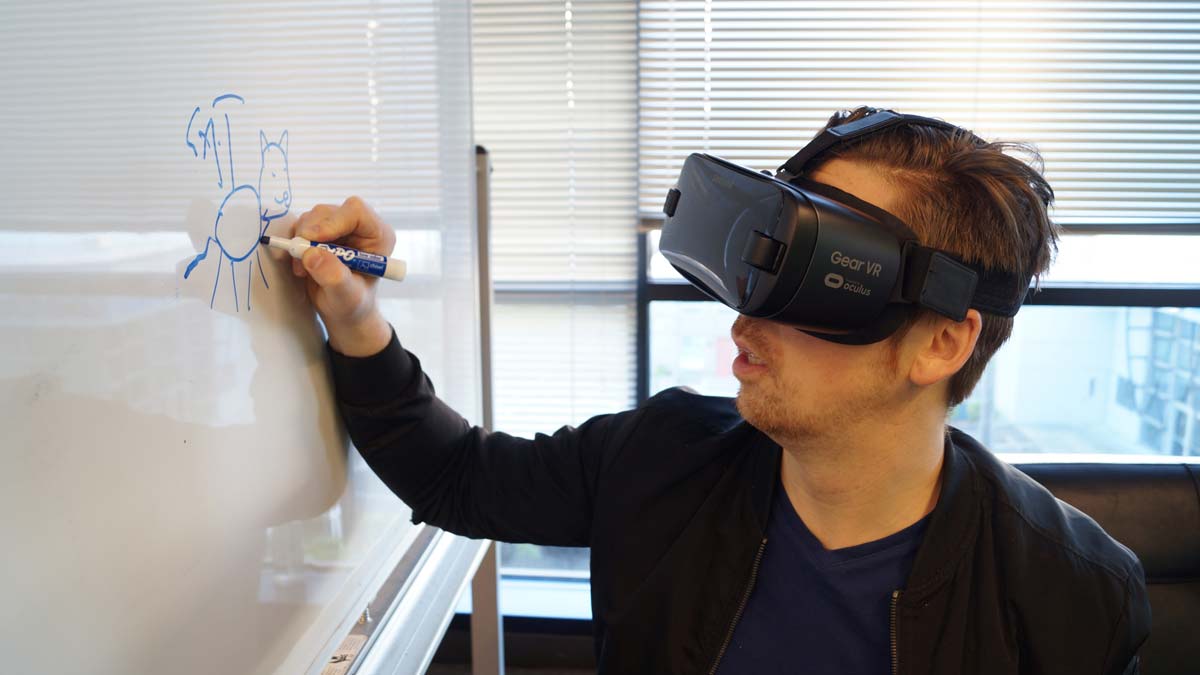The office of the future may not have a physical location. The immersive power of XR, or extended reality, will eliminate the problem of distance and bring employees together in a new kind of decentralised workplace, where augmented reality (AR) and virtual reality (VR) are the norm.
Augmented reality, virtual reality and mixed reality are collectively called Extended Reality — XR for short. These transformative technologies are powered by artificial intelligence (AI), connected to the Internet of Things, and delivered through the cloud and integrated into systems.
In many companies, XR is already enabling employees to collaborate with one another in new ways, fundamentally shifting the way post-industrial businesses operate. This trend will continue on an upwards trajectory, according to research from the management consultancy Accenture, which found that 80 per cent of executives believe it’s important to leverage extended reality solutions to close the gap of physical distance when engaging employees and customers.
What extended reality offers:-
- Physical and digital world collision – Whether it’s on the jet tarmac or assembly line, in the warehouse or on site for countless field service industries, overlaying digital information on the physical world through mobile and headset-enabled AR is transforming the way employees receive training and work. This combination of the physical and digital worlds is heading to greater efficiency and safety while driving productivity.
XR is providing enterprises with a platform that helps people in performing their jobs better. Instead of delivering information through a 5-inch mobile screen, AR and virtual reality (VR) can provide enterprise workers with an immersive, 360-degree, three-dimensional view that can revolutionize on-the-job problem-solving and training.
- Transforming done by XR in remote working– The XR tools mean making this experience feel natural and enjoyable is getting easier all of the time, the organisations have already made a step in implementing mixed reality into its collaborative processes. With teams stationed around the world, meetings are often held in virtual spaces with attendees appearing as avatars. These virtual meetings enable us to collaborate in a workshop-style setting, as opposed to a standard voice or video teleconference.
Accenture’s 2017 report on the key technologies driving corporate change found that companies are increasingly turning to XR as a new way to address problems around distance. The report also found that 27 per cent of executives think it’s important for their organisation to be pioneers in XR solutions.
- It is Democratizing Your Expertise- Indeed, preserving and passing on institutional knowledge and providing consistent training and certification programming is now a strategic imperative for energy and utility companies, as well as many other industries relying on a skilled workforce. This is called strategic imperative “Democratizing Expertise.”
XR can also fasten the on- boarding process for new workers and improve productivity by providing immersive training, ongoing education and support on the job.
- Using XR in this way will enhance human connection, not diminish it – People quite rightly worry about removing the human element from our interactions, however, compared to an email or phone call, this way of working is a much more human experience. There’s no doubt that there is still very much a time and place where face-to-face communication is essential, but over time, as the technology develops, formalities may be replaced by practicality. XR offers a bridge between the traditional telephone call and face-to-face interactions, providing people to feel like they’re in the same place when it is logistically impossible.
Some of the other industry examples:-
Air craft making- Many projects and operations and future considerations for extended reality technologies have been expanding throughout the global aviation industry over the past decades.
Real estate – The arrival of immersive technologies has revolutionized several industry sectors and real estate is no exception. Same is with the advent of extended reality. Today over 51% of the property buyers search their homes online. But, the advent of augmented reality and virtual reality in real estate can eliminate this issue altogether. Advanced VR applications can offer 360-degree tours of several properties for interested buyers in any location. By introducing AR and VR it will transform the landscape of real estate. Sellers can incorporate this in their online marketplace to offer a streamlined experience for buyers and investors. This will help in attracting global investment.
Ship building- Virtual reality is a very good option for designing and showing it to the clients. Extended reality all together provides a lot of new ideas and scope to do the designing and construction. Decisions making is difficult by imagining a 2D or 3D drawing, but by actually walking through the virtual ship you can’t miss details such as sightlines, clearance or headroom. This will make construction far more efficient. Even multiple users can simultaneously access the simulated VR environment. Creating endless interactive opportunities .
It’s Early Days Still for AR, VR and Extended Reality
There’s no doubt this trend is still in its very early days. The market for extended reality devices remains relatively immature and we’re only scratching the surface in terms of the type and accessibility of applications to enable the above scenarios. Undoubtedly we will uncover many other opportunities in the enterprise use of extended reality. It is expect that this technology is going to become the next key piece in the digital workplace picture. Just as mobile phones and touch-screen devices evolved enterprise technology beyond desktop, so extended reality will inspire the next wave of innovation in workplace technology.
